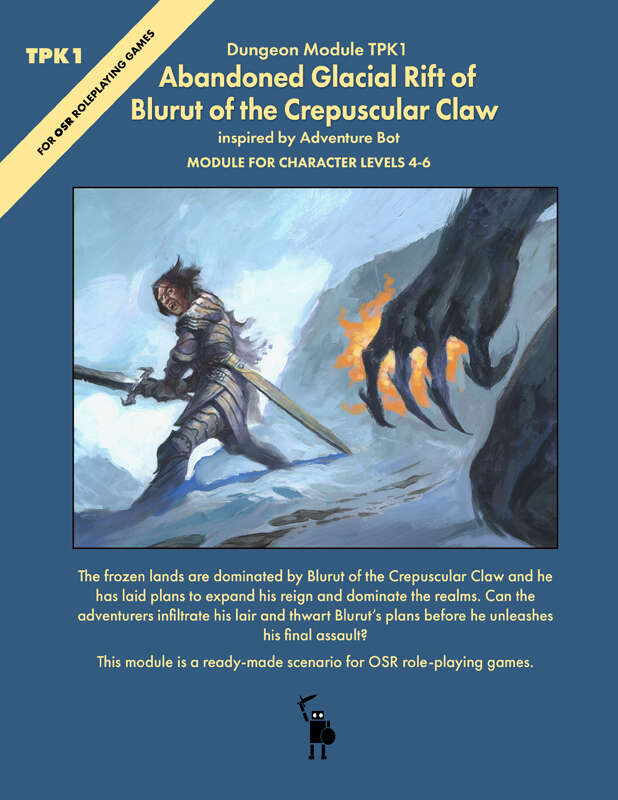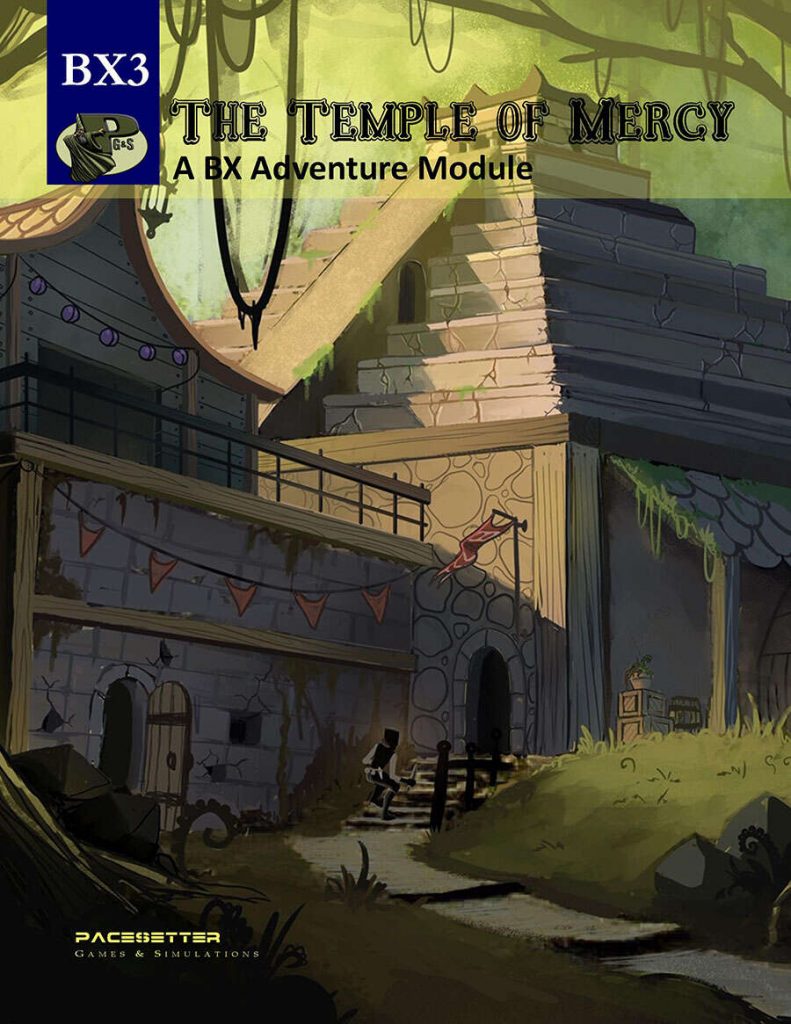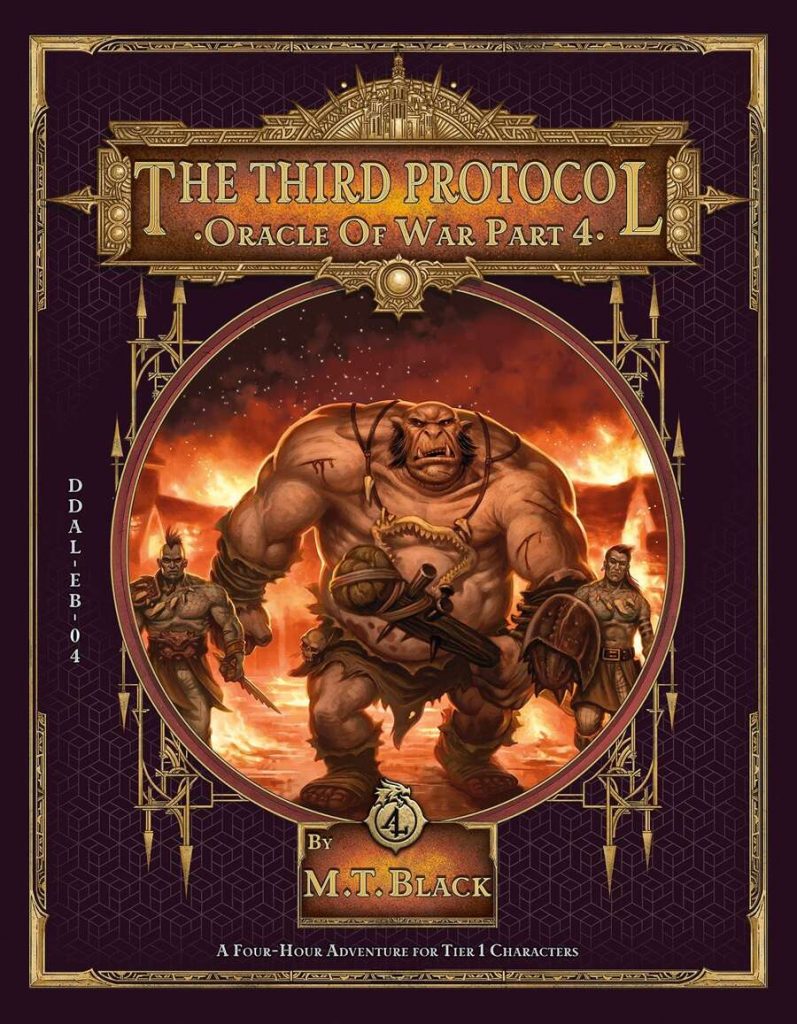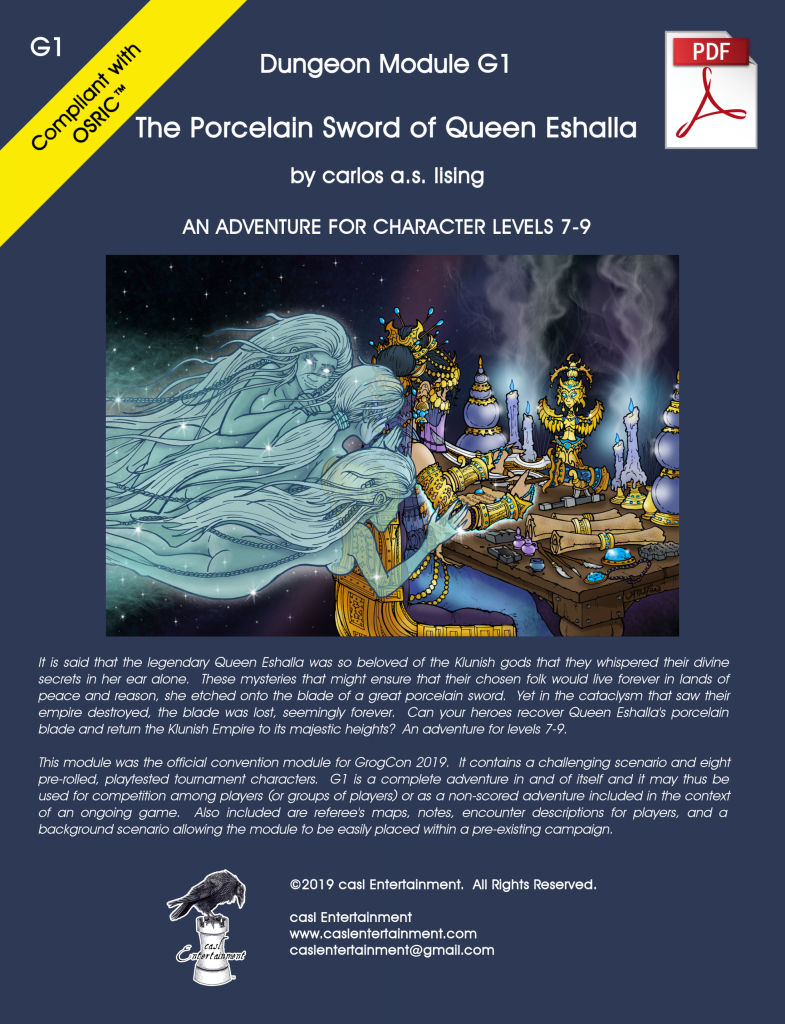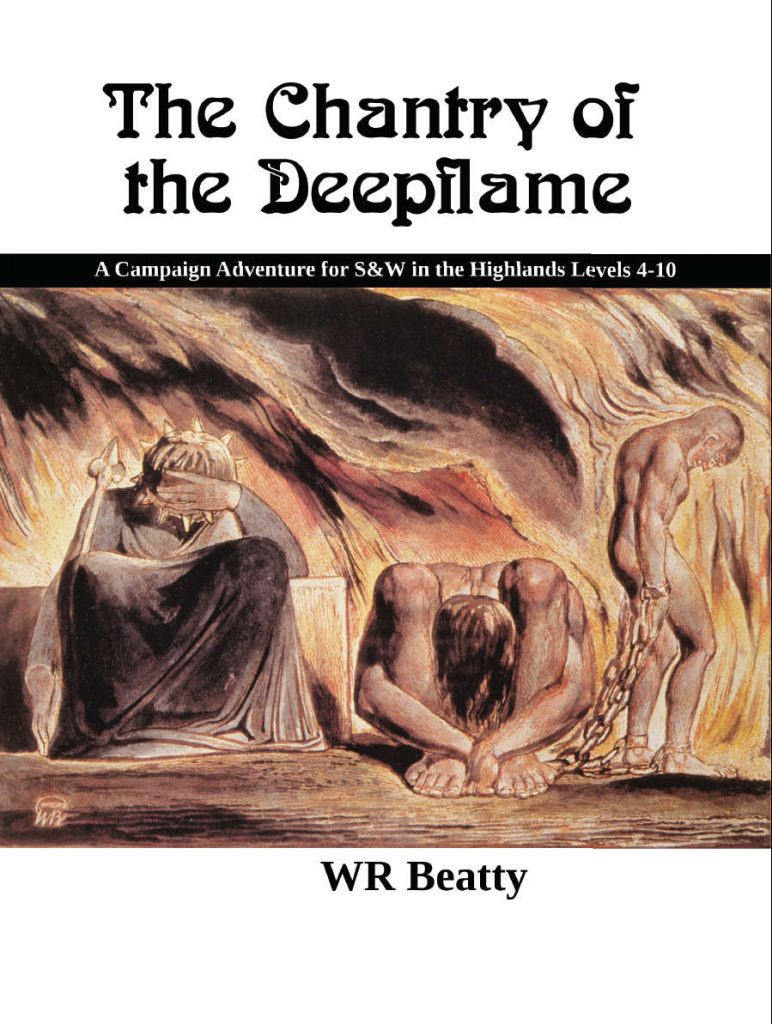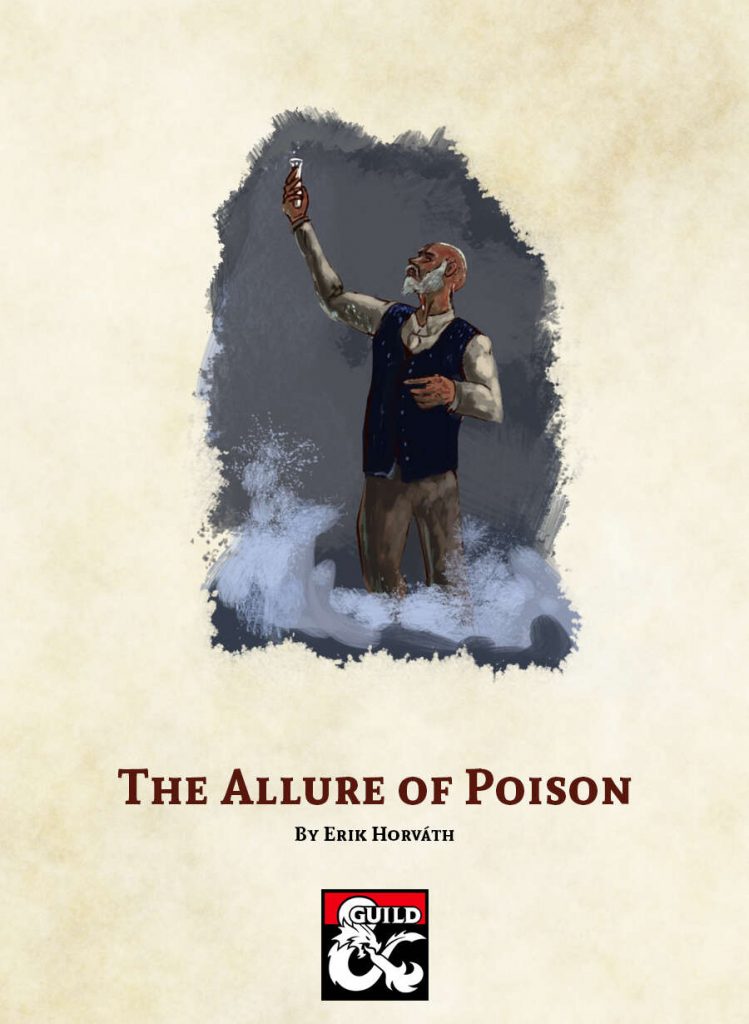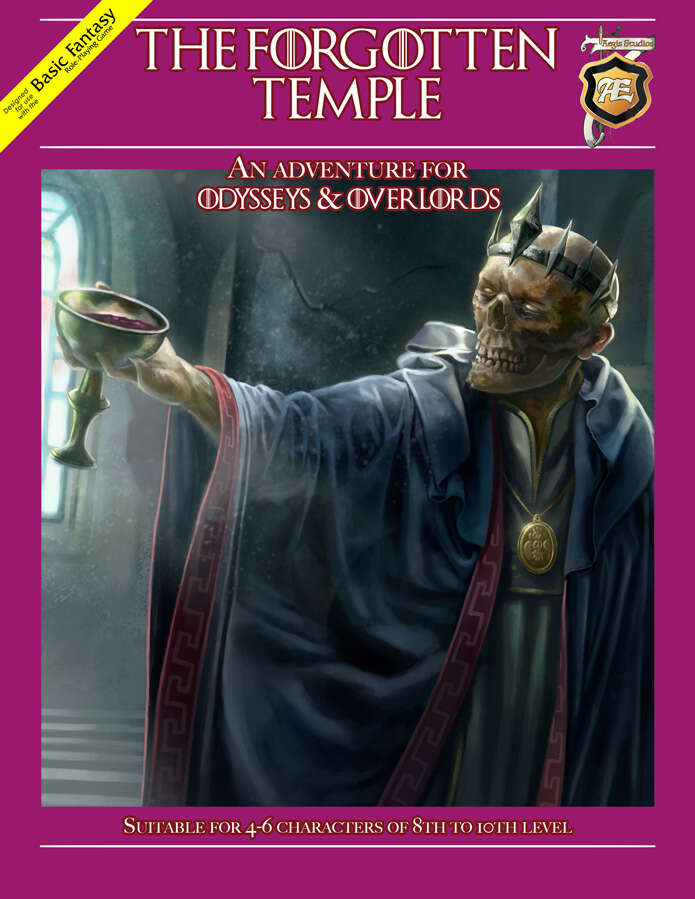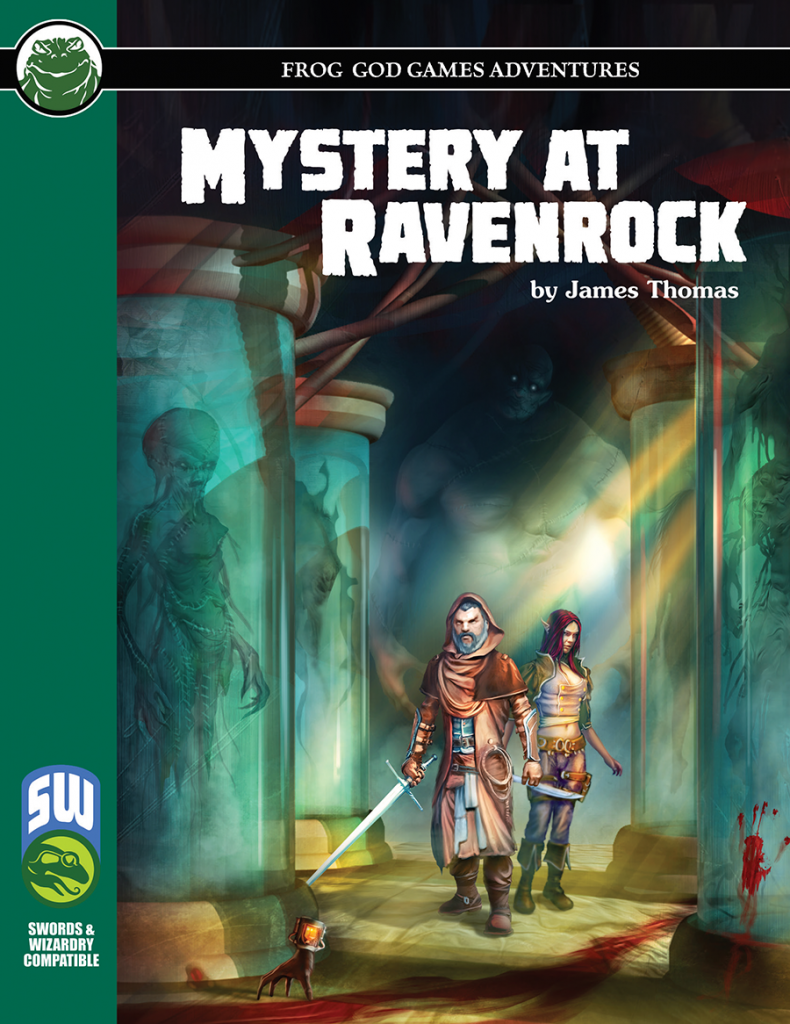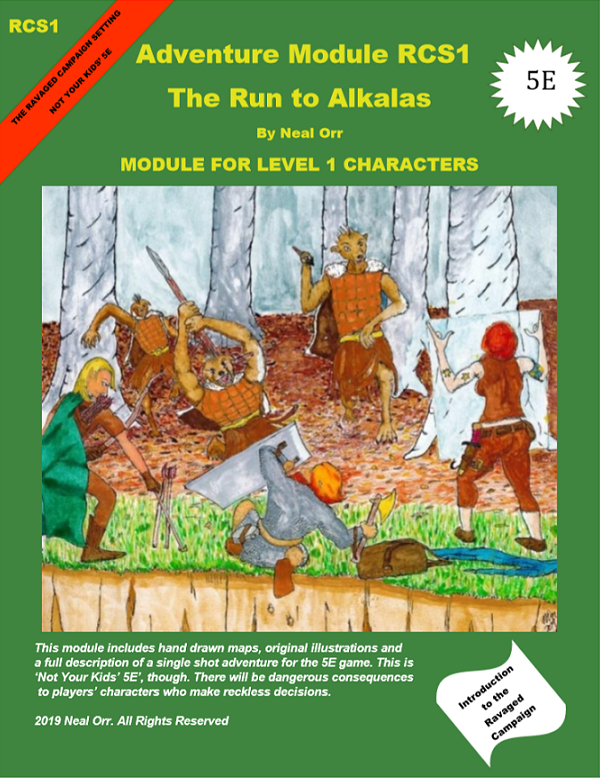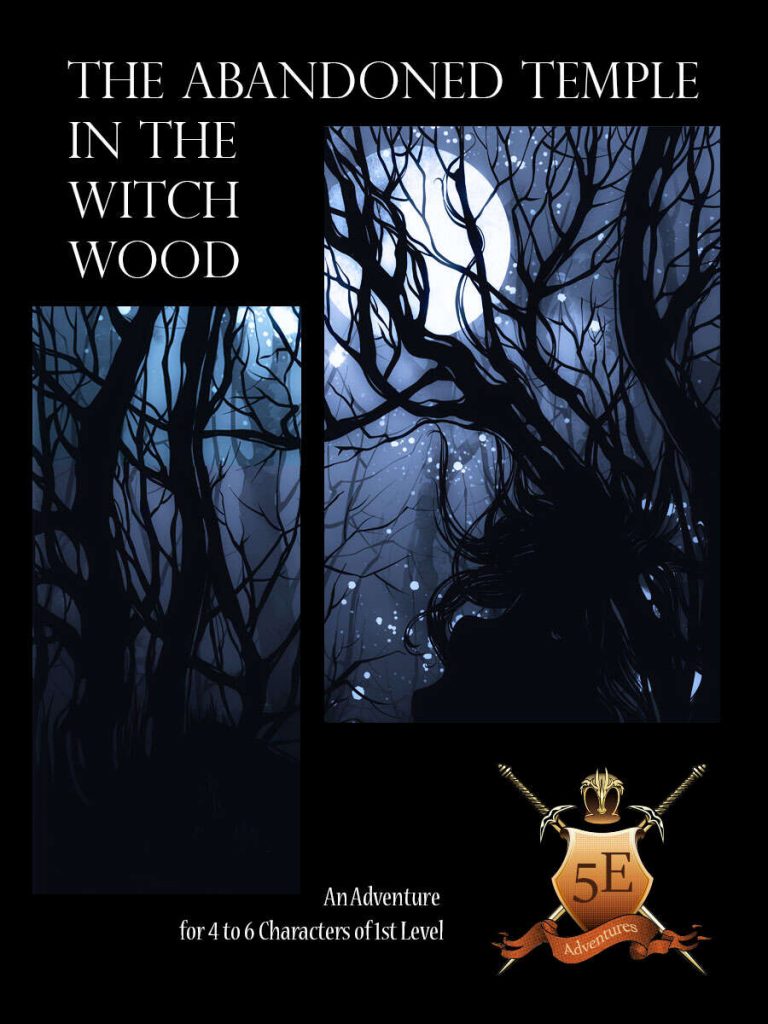
By Streaming Consciousness Studios LLC Streaming Consciousness Studios LLC 5e Level 1
Nestled deep in the mountains is the Witch Wood. Far from the civilizations of men, elves and dwarves is a small temple dedicated to the Goddess of the Harvest. It is long rumored to have been suddenly and mysteriously abandoned, and the common folk speak of treasures left behind in the ruin. They also speak of something strange lurking within which was awoken with dark, misguided magic. But you don’t believe in folk tales, do you?
This eighteen page adventure describes a fourteen room underground section of an … abandoned temple! Long DM text, a combat focus, and a certain pointlessness to the adventure detracts, but there is some decent read-aloud sentences in places. If I were to pick one D&D adventure to represent the aimless ennui of 5e 3rd party adventures then this would be it.
I have fallen out of the habit of starting reviews with something nice to say. Some portions of some of the read-aloud in this is fine. “A massive wooden closet dominates … “ or a door completely off its hinges, impact marks from heavy objects in many places. An alter surrounded by dried berries, clay jugs filled with earth and candle stubs. These are fairly representative of the better read-aloud in some of the rooms. I wouldn’t call these descriptions great, but they are very clearly a cut above the usual read-aloud that abound in adventures. An effort is being made to paint a picture and to focus on some evocative elements. Which is exactly what it should be doing.
The rest of the read-aloud, though, is the usual stuff that you would expect. It drifts in to using boring words like long hallways, large rooms, and empty blah blah blahs. Strange that it should have forgotten its thesaurus after the obvious attention to one in the better read-aloud. It also engages in weasel wording, like “appears to be “ and “what looks to be …”, garbage filler that adds nothing to a read-aloud. And then, of course, it has to overexplain. The clay jigs, above, filled with earth. Well, yeah, it’s a harvest temple so that makes sense. But, if I stand at the doorway to a room can I somehow see through the jugs to know they are full of earth? Again,the heart of RPG’s is the interactivity between the DM and players and by oversharing the read-aloud you are removing the players ability to ask those follow up questions such as “I look in the jug, or I pour out the jug. Finally, it has to mention exits in the red-aloud. Where the doors are. I know some of you (misguided) people like this. I think it’s dumb. You have a limited attention budget, why waste it on the exits if they are just normal? Oh, did I mention the italics. “Everyone else is using italics!” I don’t care. Long chunks of italics are hard to read. This adventure has a typesetter listed in its credits. Don’t typesetters know about that shit? Fucking italics …
The adventure is full of combat. Go in a room, get attacked by something. This may be the most boring type of D&D. (vying against the Eg Greenwood Museum Tour?) There’s this meme that D&D is about kicking in the door, killing things and taking their stuff. IMaybe in 4e. And I’m sure a lot of people have played that way. But that’s just the surface. It’s the interactivity, through exploration and roleplaying, that’s the key to the good games. But you generally won’t find that here. Just go in to the next room and kill whatever’s there. Or encounter that worst type of trap ever: the hallway trap. Nothing does more to slow down a game than a hallway trap.
DM text is atrocious. Long long LONG sections of text with little thought to formatting other than a monster bolded. The “dungeon atmosphere” section is a column long, impossible to reference during play. The room DM text is conversational and hard to locate what the paragraph is supposed to be about, let alone look up information. Adventure writing is technical writing. You scan the text at the table while running the game. The DM text formatting MUST support that. It takes an entire page to describe a wandering monster table of six entries. It has to hem and haw and you could do this or you could do that. Rumors are boring, but it does give you advice on doing them in voice or better setups for them than the boring old text. Better, though, to have just done that in the first place.
The whole thing feels more pointless than most 5e adventures. No real motivation to go to the temple, several days away, other than “its there.” No real point to exploring, other than fighting things and recovers a tiny amount of treasure. I like a good site-based adventure and they can be good without having a plot or goal to them, the DM adding whats needed. But this one feels different. More aimless than most. More pointless than most. That’s not an appeal for plot.
“Most of the details of this room are obscured because of the sheer amount of thick webbing everywhere.” one of the rooms tells us. That’s it. What details are there? None. It’s just going through the motions of an adventure. An emulation.
This is Pay What You Want at DriveThru with a suggested price of $1.50. The preview is three pages, although, yes, it is PWYW, so it’s all preview in a sense. It doesn’t show you any of the dungeon rooms, which is a mistake. The last pages shows you some of the “travelling to the temple” nonsense, bloated and impossible to follow during play.
https://www.drivethrurpg.com/product/304796/The-Abandoned-Temple-in-the-Witch-Wood?1892600

